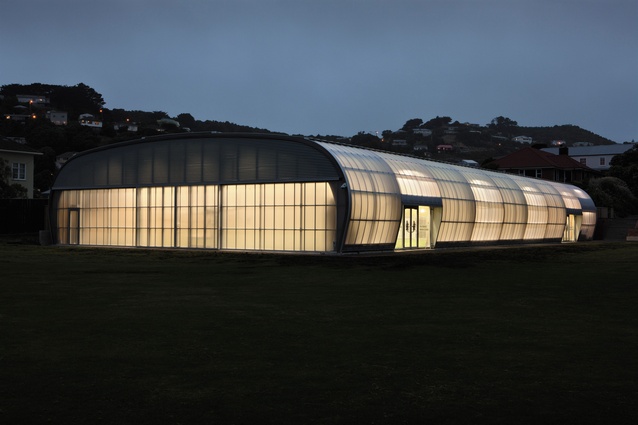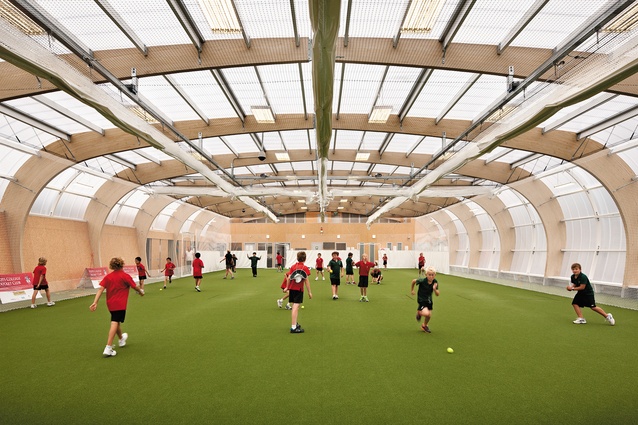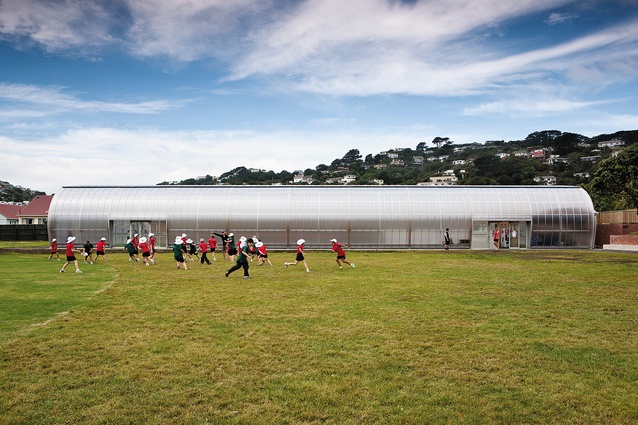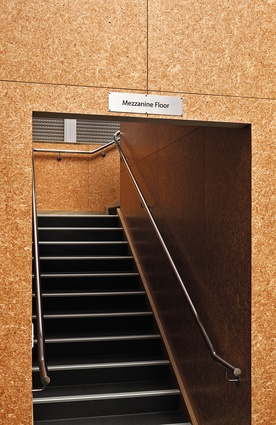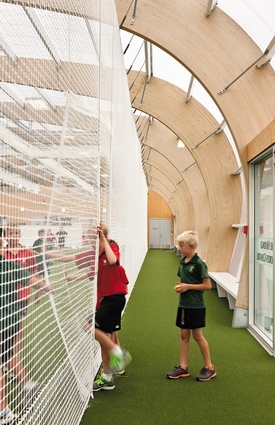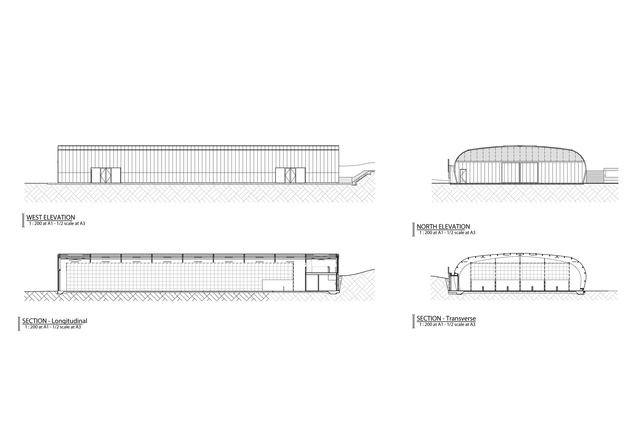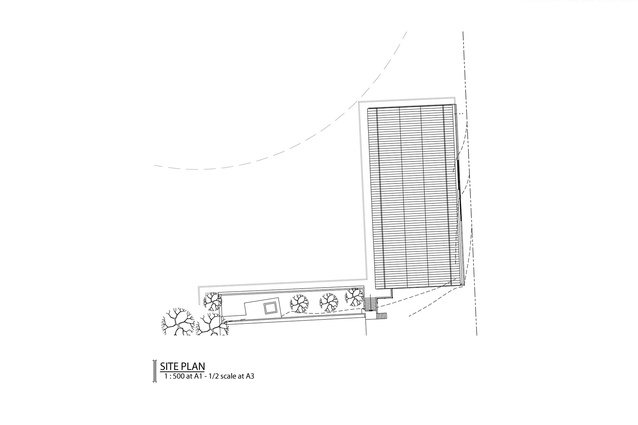The Hodge Sports Centre
The gymnasium at my high school was pretty much the same as any gym found throughout New Zealand. In the interests of economics, it was exactly the same size as a basketball court so that the hoops were bolted on opposing walls. Power dunking, it is fair to say, was only for the most robust or rubbery of students. For those of us lacking in such qualities, it also had thick ropes hanging from the roof so that the weak and uncoordinated could practise overhand climbing in expectation of the day the Royal Navy would require our services for boarding a French man-o’-war. My, how times have changed as The Hodge Sports Centre at Scots College in Wellington so eloquently demonstrates.

This facility is the latest addition by long-time collaborators to the College’s campus, Athfield Architects, and it is already generating quite a buzz as an international-quality cricket resource, unique to the region. The focus of activity is provided by 800m2 of covered TigerTurf with another 200m2 of amenity space in support. Technically, the centre is not a gymnasium but a covered wicket with ventilation serviced by banks of louvres at each end. And, much of the lighting arrives as a complimentary contribution courtesy of the sun. But, for anyone encountering the space, it must seem like a very real piece of building and a far cry from the talk of a ‘shed’ in the initial discussions between architect and client.
Anna Burtt, the college’s marketing manager, gifted me an analogy when she described the structure during construction as looking like “a whale carcass”. Indeed, on the Miramar Peninsula, it seems a most fitting parallel (and it is interesting that, in Maori legend, Miramar was formed by the corpse of the taniwha Whaitaitai who died as he tried to escape the harbour). However, now completed, any sense of entering the building as Jonah entered the whale is immediately dispelled by the bright airiness of the space.
As the design architect Nick Strachan tells it, the college wanted a space that would accurately approximate “good cricket weather” which, suffice to say, is not a Wellington given. The combination of laminated timber beams and 1,350m2 of translucent polycarbonate cladding achieves an unexpectedly vibrant environment on a dour day. And, what about a perfect summer afternoon? “Bright enough to need sunglasses,” replies Strachan. Just like real cricket then.
While the priority for the brief was for a high-calibre cricket centre, the school also needed it to function as a general physical-education facility, especially throughout winter when boys can suffer from inactivity. Flexibility is offered by the remote-controlled retractable nets (white for the sides, black for the top), which allow a number of cricket training configurations as well as clearing the turf completely for other activities. It is really ‘a shell within a shell’, with the installation of the inner requiring three days work in situ at an industrial sewing machine. Designing the building beyond the needs of ordinary cricket has provided the school with a facility that can serve cricket requirements for the entire region, as well as provide for community requests (a local tai chi group is already using it).
Strachan is quick to point to the excellent working relationship between themselves, Scots and contractor Richard Field (of Field & Hall). This is not their first collaboration and, if the feedback I received is anything to go by, it won’t be the last either. ‘The Hodge’ is situated at the location of the old outdoor batting nets on the school’s eastern boundary and, with the addition of subtle landscaping along the approach, the complex now provides an important spatial anchor that was previously missing from the sports fields. This is reinforced by the very recent completion of a complementary building for creative and performing arts on the western edge (also by Athfield’s). Visually, there remains some ambiguity about the separation of the sports centre from other parts of the school but, in practice, the need to stay clear of the cricket field boundary forced the shot, as it were.
The interior is ordered by those laminated ribs, which were chosen over steel for economic reasons, but I like the thickness of the reveal they provide; it adds depth to a space that might otherwise have become too visually balloon-like. That said, without the well-detailed expressed pin joint that divides the two banks of ribs, the timber might have become too heavy for the volume. A secondary steel frame carries the lights and nets, along with special cameras that were installed for recording and analysing individual players.
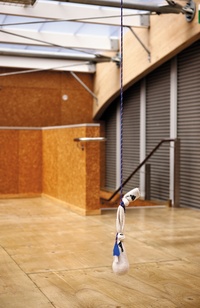
It is apparent that Strachan brings to this project his experience of working for Grimshaw Architects in the UK. It’s not Paddington Station, but the careful attention paid to expressing steel connections shows the lessons of getting structural detailing right in an exposed form. At one point, Strachan explored the option of using a similar pin joint for the base of the ribs until seismic considerations demanded a more stable connection. The engineers, he says, laughed loudly at the idea. But, there are limitations in the ribcage approach. Strachan is the first to admit that extruded forms present problems at the ends. Here, the rear is handled by notching the offices and changing rooms into an earth bank (an exercise which required extensive retention piling). This lowers the profile view to the school, hides services and allows direct egress through the mezzanine.
The public end is less successful. Concept renders inadvertently suggested to me an extension of the polycarbonate skin to create a large porch. What they actually show are large doors slid back on a fine day. The open end certainly adds another dimensional to the space and its use, but I was so wrong about the porch as it seems that such a gesture could have offered much by way of environmental variety and symbolic welcome. Ultimately, the centre does feel compromised at this point where it makes its most public gesture. That said, the more formal relationships to the school and community have been exceedingly well considered, and Scots is rightly proud of the result: none more than the Director of Cricket, Christie van Dyk. I asked him about the one thing I did recognise from my school days. It is heart -warming to see that no amount of technology can yet replace a ball in a sock on a rope as the best way to develop a batter’s eye.

